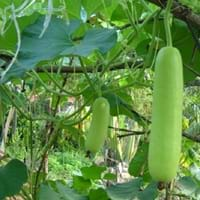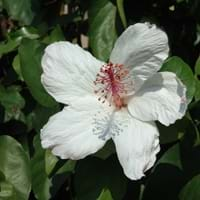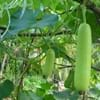Life Span
Annual and Biennials
Annual and Perennial
Type
Vegetable
Broadleaf Evergreen
Origin
India, Philippines, Southeast Asia
North America, Mexico, Central America
Types
Not Available
Not Available
Habitat
Moist Soils, Tropical Climate
gardens, Grassland, Homesteads, Subtropical climates, tropical environments
USDA Hardiness Zone
5-7
9-15
AHS Heat Zone
12-1
Not Available
Sunset Zone
A1, A2, A3, H1, H2, 1a, 1b, 2a, 2b, 3a, 3b, 4, 5, 6, 7, 8, 9, 10, 11, 12, 13, 14, 15, 16, 17, 18, 19, 20, 21, 22, 23, 24
21,22
Habit
Vining/Climbing
Oval or Rounded
Flower Color
Yellow, Orange, Dark Green
Gold
Flower Color Modifier
Bicolor
Bicolor
Fruit Color
Yellow, Dark Green
Chocolate, Ivory, Black
Leaf Color in Spring
Green, Dark Green
Dark Green
Leaf Color in Summer
Green, Dark Green
Dark Green
Leaf Color in Fall
Green, Dark Green
Dark Green
Leaf Color in Winter
Not Available
Dark Green
Plant Season
Summer, Fall
Spring, Summer, Fall, Winter
Sunlight
Full Sun
Full Sun, Partial Sun
Growth Rate
Very Fast
Medium
Type of Soil
Loam, Sand
Loam
The pH of Soil
Neutral
Neutral
Soil Drainage
Well drained
Well drained
Bloom Time
Indeterminate
Early Summer, Summer, Late Summer, Early Fall, Fall, Indeterminate
Tolerances
Drought
Drought, Variety of soil types
Where to Plant?
Ground
Ground, Pot
How to Plant?
Seedlings
Stem Cutting, Tip cutting, Vegetative Reproduction
Plant Maintenance
Medium
Medium
Watering Requirements
Requires watering in the growing season, water on alternate days
It cannot sustain wet-feet, Keep the Soil well drained, Requires watering in the growing season, Water Deeply, Water frequently while growing, Water more in summer, Water when soil is dry
In Summer
Lots of watering
Lots of watering
In Spring
Moderate
Moderate
In Winter
Average Water
Average Water
Soil Type
Loam, Sand
Loam
Soil Drainage Capacity
Well drained
Well drained
Sun Exposure
Full Sun
Full Sun, Partial Sun
Pruning
Cut out old flower stalks, Prune after flowering, Remove branches that rub together, Remove dead or diseased plant parts
A hard prune may be necessary if the plant becomes woody, Cut leaves after fall, Cut or pinch the stems, Pinch or prune as they grow to promote branching and bushiness, Prune for shortening long shoots, Prune in early summer, Remove deadheads
Fertilizers
High potassium diluted feed of 5-10-5, Nitrogen, Potassium
Apply 10-10-10 amount, Balanced liquid fertilizer, Do not fertilize new plants until at least a month, Use a low phosphate fertilizer to improve the quality of the blooms
Pests and Diseases
Army-worms, Bacteria wilt, Bacterial leaf spot, Blight, Cucumber beetles, Cutworms, Fusarium leaf spot, Leaf rust, Red spider mite, Striped cucumber beetles
Aphids, Mealybugs, Red spider mite, Scale, Thripes, Whiteflies
Plant Tolerance
Full Sun, Salt and Soil Compaction, Shallow soil
Drought, Variety of soil types
Flower Petal Number
Single
Single
Foliage Texture
Coarse
Medium
Foliage Sheen
Matte
Glossy
Attracts
Bees, Flies, Flying insects
Bees, Butterflies, Hummingbirds
Allergy
Hypoglycaemic Coma, Irregular Heart Rhythm
no allergic reactions
Aesthetic Uses
Decorating walls, Ornamental use
Beautification, Borders, Landscape Designing
Beauty Benefits
Anti-ageing, Making cosmetics
Hair Conditioner, Not Available, Prevents greying of hair, Prevents Premature Baldness, Promotes Healthy Hair, Promotes healthy skin, Speed hair growth
Environmental Uses
Food for animals, Insect Repellent
Air purification
Medicinal Uses
Anti-fungal, Blood disorders, Culinary Usage, Diabetes, Gastrointestinal disorders, Laxative, Nutritive, Weight loss
anti-inflammatory, Diuretic, Hair Loss, High blood pressure, Vitamin C
Part of Plant Used
Fruits
Flowers, Leaf Stalks, Leaves
Other Uses
Cosmetics, Culinary use, Repellent, Used in making musical instruments
Culinary use, Employed in herbal medicine, Jam, Jelly, Making Shampoo, Oil is used for aromatherapy, Oil is used in perfume, soaps, creams, etc., Showy Purposes, Traditional medicine, Use in Chinese herbology, Used As Food, Used as Ornamental plant, Used for bedding in gardens, Used for fragrance, Used for its medicinal properties, Used in making beverages, Used in paper industry, Used in salads, Used to make hair tonic
Used As Indoor Plant
No
No
Used As Outdoor Plant
Yes
Yes
Garden Design
Dried Flower/Everlasting, Vine
Container, Foundation, Houseplant, Mixed Border, Tropical
Botanical Name
Lagenaria siceraria
Hibiscus arnottianus
Common Name
calabash, bottle gourd, white-flowered gourd, opo squash
White Hibiscus
In Hindi
लौकी
सफेद हिबिस्कुस
In German
Flaschenkürbis
Weiß Hibiscus
In French
Lagenaria siceraria
white Hibiscus
In Spanish
Lagenaria siceraria
hibisco blanco
In Greek
Τσότρα
White Hibiscus
In Portuguese
Cabaça
Hibiscus branco
In Polish
Tykwa pospolita
Biały Hibiscus
In Latin
utrem cucurbita
Hibiscus album
Phylum
Magnoliophyta
Magnoliophyta
Class
Magnoliopsida
Magnoliopsida
Order
Cucurbitales
Malvales
Family
Cucurbitaceae
Malvaceae
Clade
Angiosperms, Eudicots, Rosids
Angiosperms, Eudicots, Rosids
Tribe
Not Available
Hibisceae
Subfamily
Papilionoideae
Malvoideae
Importance of Bottle Gourd and White Hibiscus
Want to have the most appropriate plant for your garden? You might want to know the importance of Bottle Gourd and White Hibiscus. Basically, these two plants vary in many aspects. Compare Bottle Gourd and White Hibiscus as they differ in many characteristics such as their life, care, benefits, facts, etc. Every gardener must at least have the slightest clue about the plants he wants to plant in his garden. Compare their benefits, which differ in many ways like facts and uses. The medicinal use of Bottle Gourd is Anti-fungal, Blood disorders, Culinary Usage, Diabetes, Gastrointestinal disorders, Laxative, Nutritive and Weight loss whereas of White Hibiscus is anti-inflammatory, Diuretic, Hair Loss, High blood pressure and Vitamin C. Bottle Gourd has beauty benefits as follows: Anti-ageing and Making cosmetics while White Hibiscus has beauty benefits as follows: Anti-ageing and Making cosmetics.
Compare Facts of Bottle Gourd vs White Hibiscus
How to choose the best garden plant for your garden depending upon its facts? Here garden plant comparison will help you to solve this query. Compare the facts of Bottle Gourd vs White Hibiscus and know which one to choose. As garden plants have benefits and other uses, allergy is also a major drawback of plants for some people. Allergic reactions of Bottle Gourd are Hypoglycaemic Coma and Irregular Heart Rhythm whereas of White Hibiscus have no allergic reactions respectively. Having a fruit bearing plant in your garden can be a plus point of your garden. Bottle Gourd has showy fruits and White Hibiscus has no showy fruits. Also Bottle Gourd is not flowering and White Hibiscus is not flowering . You can compare Bottle Gourd and White Hibiscus facts and facts of other plants too.



